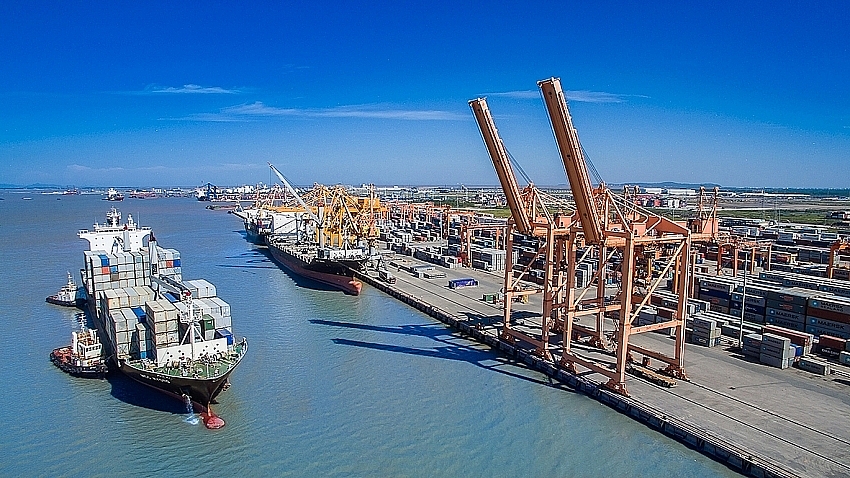Foreign investors bail on Vinalines sale
 |
A source of Vinalines told VIR that only one investor, named as one of the largest conglomerates in South Korea, had submitted the registration document to buy a 14.8-per-cent stake in the company at the close of registration on July 12.
The potential investor was said to have entered the Vietnamese market in the early 2000s. Its core business lines include shipping and logistics.
“We have submitted the document for consideration of the potential investor’s capacity to meet the criteria to the Ministry of Transport (MoT). The result should be announced soon,” the source said.
The registration result means that many potential foreign investors, including Belgian firm Rent-A-Port and those from Japan, the US, and South Korea, did not join the race, which was expected to become one of the hottest mergers and acquisitions (M&A) deals in the Vietnamese shipping industry in 2018.
It is notable that in the middle of last year, Rent-A-Port signed a memorandum of understanding (MoU) with Vinalines in the hope of acquiring 10 per cent of the latter’s charter capital upon its equitisation. At that time, many expected that this agreement would come to fruition.
Following the equitisation plan approved by the prime minister on June 20, Vinalines will have the charter capital of VND14.046 trillion ($624.26 million) after it is equitised.
The state will hold 65 per cent of the company’s charter capital, while strategic investors can acquire 14.8 per cent and the remaining 20 per cent will be sold at the initial public offering (IPO) in September.
The Vietnamese shipping giant is now counting the days until it receives the result from the MoT, hoping that the registered investor can meet the criteria, all the while preparing for the upcoming IPO.
The highlighted criteria include those requiring investors to have the necessary financial capacity, profitable business results in the last two years from the registration date, and no accumulated losses.
What is more, investors who operate in the same business line must have the charter capital of at least VND1 trillion ($44.24 million), while the threshold for those in a different business line is doubled. Investment funds are required to have at least VND2 trillion ($88.49 million) worth of total assets.
As proposed in July, Vinalines wants to auction off 20 per cent of its stake, nearly 281 million shares, on the Hanoi Stock Exchange in the first week of September, at a starting price of VND10,000 ($0.44) per share under the ticker name of MVN.
The IPO’s result is as yet uncertain, but it is expected to garner interest from domestic and foreign investors thanks to Vinalines’ improved business performance in recent years–it made profits in the 2015-2017 period after years of suffering losses–and its advantages in shipping, ports, and logistics.
According to the MoT, seaports are now the most attractive segment for foreign investors in the Vietnamese transport sector, thanks to the ability to control revenue sources, while logistics is attracting international logistics giants who are investing in Vietnam in anticipation of growing trade and loosened regulations in accordance to the country’s World Trade Organization (WTO) commitments.
Vinalines currently owns a fleet of 82 ships with a total load of 1.87 million deepwater tonnage, accounting for around 25 per cent of Vietnam’s national shipping fleet, and contribute 37 per cent of Vinalines’ total revenues.
The company is also famous for logistics services in Vietnam, with a wide network of warehouses and modern inland container depots in cities and provinces, and alongside the country’s influential seaports. Logistics services make up 27 per cent of Vinalines’ total revenues.
In addition, Vinalines operates 15 seaports with a total capacity of 75 million tonnes a year, accounting for 23.53 per cent of the country’s total number of piers and 30.37 per cent of the country’s total length of piers. Vinalines’ seaports are located in strategically important locations for trade in goods as well as for regional economic development.
What the stars mean:
★ Poor ★ ★ Promising ★★★ Good ★★★★ Very good ★★★★★ Exceptional
 Tag:
Tag:
Related Contents
Latest News
More News
- Businesses ramp up production as year-end orders surge (December 30, 2025 | 10:05)
- Vietjet chairwoman awarded Labour Hero title (December 29, 2025 | 13:06)
- How to unlock ESG value through green innovation (December 29, 2025 | 10:03)
- AI reshapes media and advertising industry (December 29, 2025 | 08:33)
- FPT and GELEX sign deal to develop blockchain tech for global markets (December 29, 2025 | 08:29)
- Vietnam’s GDP forecast to grow by 9 per cent in 2026 (December 29, 2025 | 08:29)
- Women entrepreneurs are key to Vietnam’s economic growth (December 29, 2025 | 08:00)
- Vietnam's top 500 value-creating enterprises announced (December 27, 2025 | 08:00)
- The PAN Group shaping a better future with ESG strategy (December 26, 2025 | 09:00)
- Masan Consumer officially lists on HSX, marking the next phase of value creation (December 25, 2025 | 13:20)






















 Mobile Version
Mobile Version